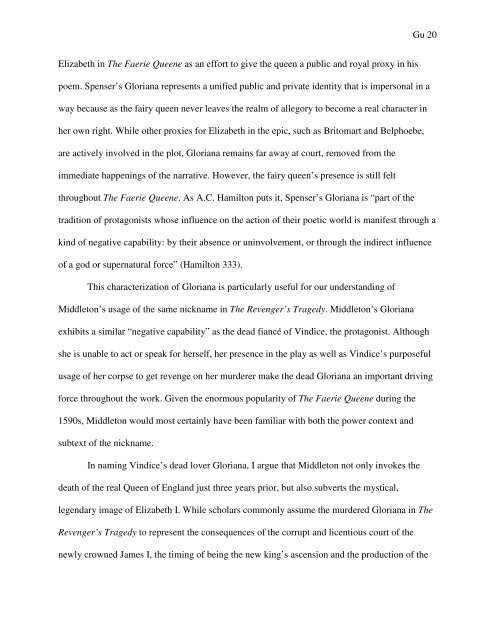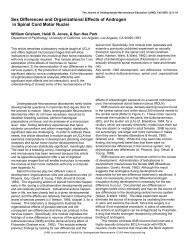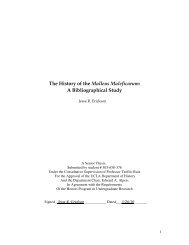Research Paper - UCLA Library
Research Paper - UCLA Library
Research Paper - UCLA Library
Create successful ePaper yourself
Turn your PDF publications into a flip-book with our unique Google optimized e-Paper software.
Elizabeth in The Faerie Queene as an effort to give the queen a public and royal proxy in his<br />
Gu 20<br />
poem. Spenser’s Gloriana represents a unified public and private identity that is impersonal in a<br />
way because as the fairy queen never leaves the realm of allegory to become a real character in<br />
her own right. While other proxies for Elizabeth in the epic, such as Britomart and Belphoebe,<br />
are actively involved in the plot, Gloriana remains far away at court, removed from the<br />
immediate happenings of the narrative. However, the fairy queen’s presence is still felt<br />
throughout The Faerie Queene. As A.C. Hamilton puts it, Spenser’s Gloriana is “part of the<br />
tradition of protagonists whose influence on the action of their poetic world is manifest through a<br />
kind of negative capability: by their absence or uninvolvement, or through the indirect influence<br />
of a god or supernatural force” (Hamilton 333).<br />
This characterization of Gloriana is particularly useful for our understanding of<br />
Middleton’s usage of the same nickname in The Revenger’s Tragedy. Middleton’s Gloriana<br />
exhibits a similar “negative capability” as the dead fiancé of Vindice, the protagonist. Although<br />
she is unable to act or speak for herself, her presence in the play as well as Vindice’s purposeful<br />
usage of her corpse to get revenge on her murderer make the dead Gloriana an important driving<br />
force throughout the work. Given the enormous popularity of The Faerie Queene during the<br />
1590s, Middleton would most certainly have been familiar with both the power context and<br />
subtext of the nickname.<br />
In naming Vindice’s dead lover Gloriana, I argue that Middleton not only invokes the<br />
death of the real Queen of England just three years prior, but also subverts the mystical,<br />
legendary image of Elizabeth I. While scholars commonly assume the murdered Gloriana in The<br />
Revenger’s Tragedy to represent the consequences of the corrupt and licentious court of the<br />
newly crowned James I, the timing of being the new king’s ascension and the production of the











